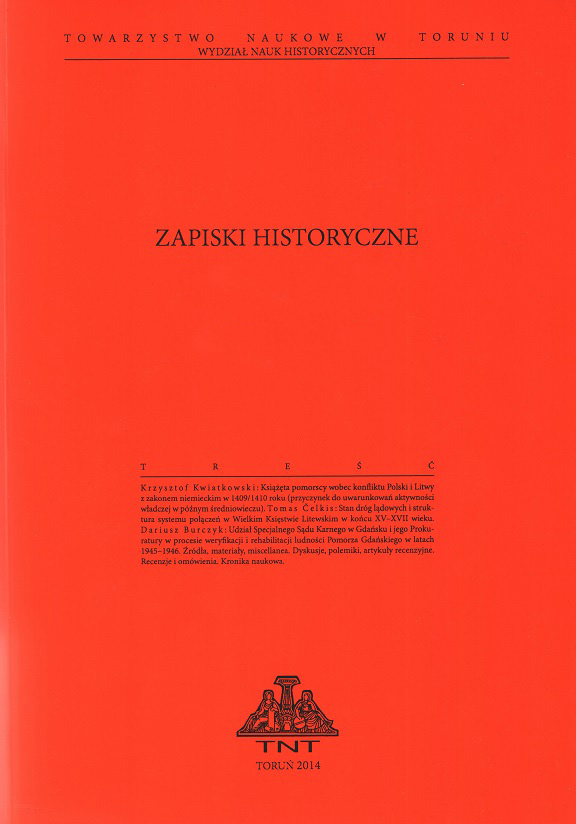Ungarisch-preussische Handelsbeziehungen im Mittelalter
Hungarian-Prussian Trade Relations in the Middle Ages
Author(s): László PósánSubject(s): Diplomatic history, Economic history, 13th to 14th Centuries, 15th Century
Published by: Towarzystwo Naukowe w Toruniu
Keywords: the Hanseatic League;East Central Europe;trade;the Teutonic Order;the Late Middle Ages;
Summary/Abstract: The aim of the article is to present trade contacts between Prussia and Hungary from the end of the 13th century to the mid-15th century. The problem has hitherto remained beyond the interest of researchers dealing with trade relations. On the basis of the Hanseatic, Polish and Hungarian sources the author analyses the structure of goods being traded, participants of the trade and trade routes. The author points out the connection between the development of trade contacts with political relations in East Central Europe. After the death of King Louis I of Hungary (1382) the trade conducted between Hungary and Prussia, which went through the Polish territories, became heavily dependent on the balance of power between the Teutonic Order, the Kingdom of Poland and the Kingdom of Hungary. The author underlines that the range of goods which were the subject of the trade started to grow at the end of the 13th century. Apart from metals (copper, iron, silver) Hungarian merchants sold to Prussian merchants wax, furs, wine, cheap cloth and southern products such as fruit, spice and condiments. In the 15th century Melnaterite (Kupferwasser), the mineral used in dyeing, was exported from Upper Hungary to the Baltic zone. Merchants from Prussian towns exported to Hungary goods imported from West Europe, mainly cloth. Until the mid-15th century the main role in Prussian trade with Hungary was played by merchants from Toruń, while in the second half of the 15th century their place was taken over by merchants from Gdańsk.
Journal: Zapiski Historyczne
- Issue Year: 83/2018
- Issue No: 4
- Page Range: 115-145
- Page Count: 31
- Language: German

